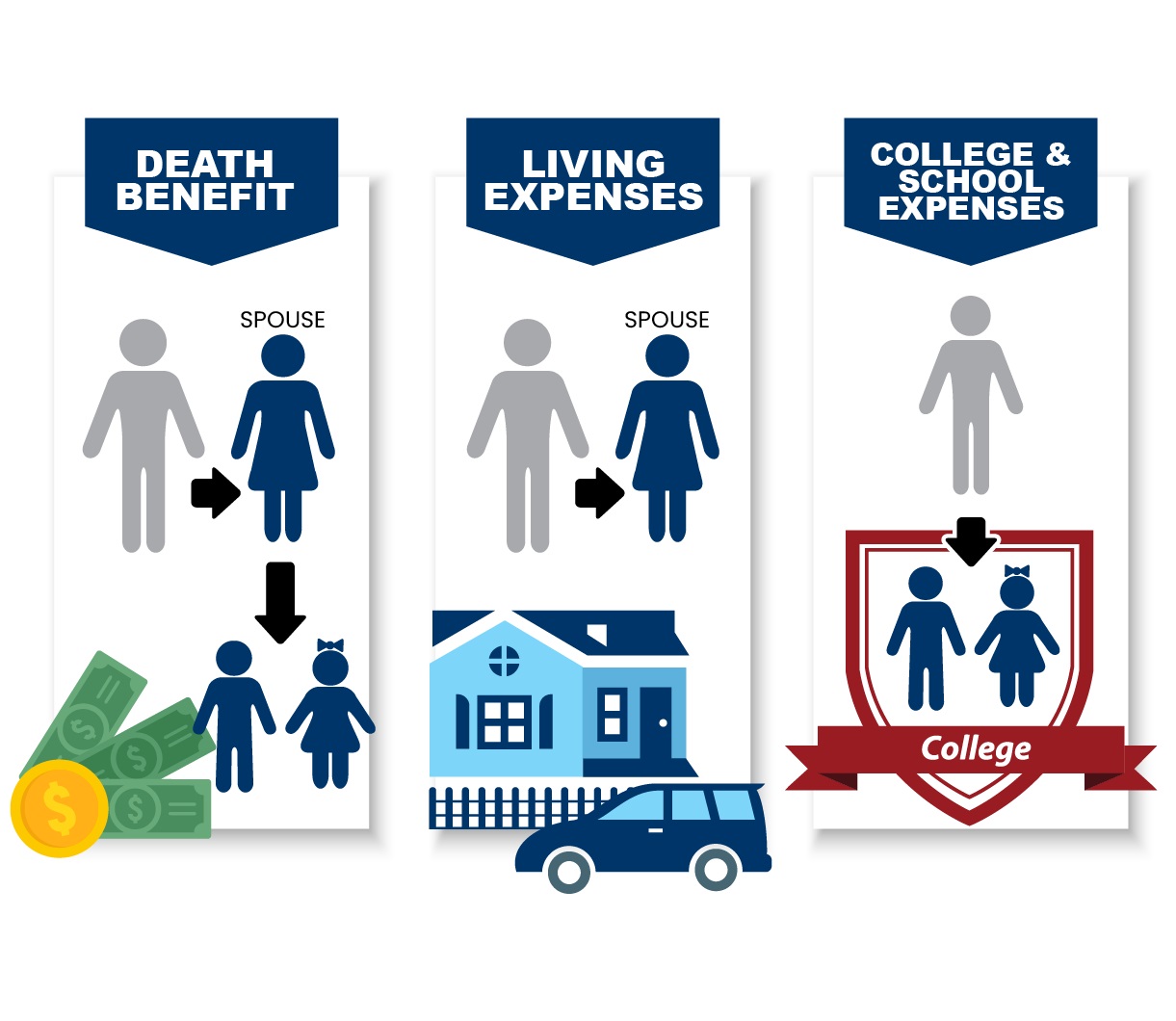Home>Finance>When A Life Insurance Policy Is Surrendered, How Does The Cost Recovery Rule Apply?


Finance
When A Life Insurance Policy Is Surrendered, How Does The Cost Recovery Rule Apply?
Published: October 16, 2023
Learn how the cost recovery rule applies when surrendering a life insurance policy. Discover the financial implications and considerations to help you make an informed decision.
(Many of the links in this article redirect to a specific reviewed product. Your purchase of these products through affiliate links helps to generate commission for LiveWell, at no extra cost. Learn more)
Table of Contents
- Introduction
- Understanding Surrendering a Life Insurance Policy
- The Cost Recovery Rule Explained
- Application of the Cost Recovery Rule to Surrendered Life Insurance Policies
- Calculation of Cost Recovery Amount
- Factors Influencing the Cost Recovery Amount
- Tax Implications of Surrendering a Life Insurance Policy
- Alternatives to Surrendering a Life Insurance Policy
- Conclusion
Introduction
Welcome to the world of life insurance! Life insurance is a financial tool that provides protection and financial security to individuals and their families. It offers peace of mind, knowing that loved ones are financially covered in the event of an unfortunate incident. However, life is full of surprises, and circumstances can change. Sometimes, policyholders find themselves in a situation where surrendering their life insurance policy becomes a viable option. But what happens when a life insurance policy is surrendered?
In this article, we will delve into the concept of surrendering a life insurance policy and explore how the cost recovery rule applies in such scenarios. We’ll discuss the factors that determine the cost recovery amount, the tax implications of surrendering a policy, and alternative options for policyholders.
Before we dive deeper into the intricacies of the cost recovery rule, let’s first understand what it means to surrender a life insurance policy. Simply put, surrendering a policy means voluntarily terminating it before its maturity or before the death of the insured. When a policy is surrendered, the insurance company provides the policyholder with a cash surrender value (CSV), which is the amount of money that has accumulated in the policy’s cash value component over time.
The cost recovery rule, on the other hand, is an important tax consideration when surrendering a life insurance policy. It determines the taxable amount that is subject to income tax when a policy is surrendered for a cash value.
Now that we have set the stage, let’s explore the cost recovery rule in detail and understand how it influences the financial implications of surrendering a life insurance policy.
Understanding Surrendering a Life Insurance Policy
Surrendering a life insurance policy is a decision that policyholders may take for various reasons. It could be due to changes in financial circumstances, the need for immediate cash, a desire to switch to a different policy, or simply a lack of need for the coverage anymore.
When choosing to surrender a policy, it’s important to consider the cash surrender value (CSV) that will be received. The CSV represents the accumulated value in the policy’s cash component, which includes the premiums paid, any investment gains, and any applicable surrender charges imposed by the insurance company.
By surrendering the policy, the policyholder forfeits the death benefit associated with the policy. This means that in the event of the insured’s death after surrendering the policy, there will be no payout to beneficiaries.
It’s crucial to carefully evaluate the financial implications of surrendering a life insurance policy. Considerations such as the need for coverage in the future, the cost of obtaining a new policy, and any potential tax consequences should be taken into account.
With a basic understanding of surrendering a policy, let’s dive into the cost recovery rule and how it impacts the financial aspects of this decision.
The Cost Recovery Rule Explained
The cost recovery rule is a key concept that applies to surrendered life insurance policies. It determines the taxable amount when a policyholder surrenders their policy and receives a cash value.
When a policyholder purchases a life insurance policy, they pay premiums over the policy term, which accumulates as the cash value of the policy. The cash value represents the policyholder’s basis in the policy, or the total amount they have paid in premiums.
Under the cost recovery rule, when a policyholder surrenders their policy, the taxable amount is calculated by subtracting the basis (the total premiums paid) from the cash value received. The resulting difference is treated as taxable income.
It’s important to note that surrendering a policy does not result in a tax-free event. The tax liability is determined by the difference between the cash value and the basis.
Let’s illustrate this with an example. Suppose John has a life insurance policy for which he paid $10,000 in premiums over the years. He decides to surrender the policy and receives a cash value of $12,000. In this case, the taxable amount under the cost recovery rule is $2,000, which is the difference between the cash value and the basis.
The cost recovery rule ensures that the policyholder is taxed only on the growth or gain in the policy, which is the cash value above the total premiums paid.
By understanding the cost recovery rule, policyholders can make informed decisions about surrendering their life insurance policies and consider the potential tax implications.
Application of the Cost Recovery Rule to Surrendered Life Insurance Policies
When it comes to surrendered life insurance policies, the cost recovery rule plays a significant role in determining the taxable amount. The application of this rule depends on various factors, including the policy type, premiums paid, and the cash value received upon surrender.
In general, the cost recovery rule applies to whole life, universal life, and variable life insurance policies. These types of policies have a cash value component that accumulates over time, making them subject to the tax implications of surrendering.
Term life insurance policies, on the other hand, typically do not have a cash value component. Therefore, surrendering a term policy does not invoke the cost recovery rule since there is no accumulated value or gain to be taxed.
For surrendered policies that are subject to the cost recovery rule, the calculation of the taxable amount is straightforward. The basis, or total premiums paid, is subtracted from the cash value received to determine the taxable income.
It’s important to consider any previous withdrawals or loans taken against the policy, as these could affect the basis and the taxable amount. If policyholders have withdrawn or borrowed against the policy, the basis is reduced by the amount of those withdrawals or loans.
In some cases, the cash value may be lower than the total premiums paid. This means that the basis exceeds the cash value, resulting in no taxable income upon surrender. However, it’s still essential to report the surrender and the basis correctly when filing tax returns.
Policyholders should consult with a tax professional or financial advisor to ensure accurate application of the cost recovery rule and to understand the potential tax consequences specific to their individual situation.
By understanding how the cost recovery rule applies to surrendered life insurance policies, policyholders can make informed decisions and effectively manage any tax obligations that may arise.
Calculation of Cost Recovery Amount
The calculation of the cost recovery amount for surrendered life insurance policies is relatively straightforward. It involves determining the basis (total premiums paid) and subtracting it from the cash value received upon surrender.
First, policyholders need to gather information about the premiums they have paid over the years. This includes all payments made towards the policy, including any additional premiums or riders.
Once the total premiums paid have been determined, the next step is to compare it to the cash value received upon surrender. This cash value can be obtained by contacting the insurance company or reviewing the policy documentation.
If the cash value is higher than the total premiums paid, the difference between the cash value and the basis is the taxable amount under the cost recovery rule.
For example, let’s say Sarah has paid a total of $20,000 in premiums for her life insurance policy and decides to surrender it. She receives a cash value of $25,000. In this scenario, the taxable amount would be $5,000, which is the difference between the cash value and the basis.
If the cash value is lower than the total premiums paid, there is no taxable income under the cost recovery rule. However, it is still important to accurately report the surrender and the basis when filing tax returns.
Policyholders should keep proper documentation of the premiums paid and the cash value received, as they may be required to provide these details when calculating the cost recovery amount.
It is crucial to remember that the cost recovery calculation applies to surrendered life insurance policies that have a cash value component. Term life insurance policies, which do not accumulate cash value, are not subject to the cost recovery rule.
By understanding the process of calculating the cost recovery amount, policyholders can determine the tax implications of surrendering their life insurance policies and ensure compliance with reporting requirements.
Factors Influencing the Cost Recovery Amount
The cost recovery amount, which represents the taxable income when surrendering a life insurance policy, is influenced by several factors. Understanding these factors can help policyholders anticipate the potential tax implications of surrendering their policies.
Here are some key factors that can influence the cost recovery amount:
- Premiums Paid: The total amount of premiums paid over the years is a significant factor in determining the basis of the policy. The higher the premiums paid, the higher the basis, which in turn affects the taxable amount upon surrender.
- Policy Age: The age of the policy influences the accumulated cash value. Generally, the longer the policy has been in force, the higher the cash value. A higher cash value results in a larger taxable amount under the cost recovery rule.
- Surrender Charges: Some life insurance policies impose surrender charges if the policy is terminated prematurely. These charges can reduce the cash value received upon surrender, thereby impacting the taxable amount. It’s important to consider any surrender charges when calculating the cost recovery amount.
- Withdrawals and Loans: If policyholders have made withdrawals or taken loans against the policy, these transactions can affect the basis and the taxable amount. Withdrawals and loans reduce the basis, potentially reducing the taxable income upon surrender.
- Policy Type: The type of life insurance policy also plays a role in determining the cost recovery amount. Whole life, universal life, and variable life insurance policies typically have a cash value component, making them subject to the cost recovery rule. Term life insurance policies, which do not accumulate cash value, are not subjected to this rule.
It’s important to note that these factors may interact and vary depending on the specific details of the policy. Therefore, policyholders should consult with a tax professional or financial advisor to assess the potential tax implications and accurately calculate the cost recovery amount.
By considering the factors that influence the cost recovery amount, policyholders can make informed decisions regarding the surrender of their life insurance policies and adequately plan for any potential tax obligations.
Tax Implications of Surrendering a Life Insurance Policy
Surrendering a life insurance policy can have tax implications that policyholders need to be aware of. The taxable amount is determined by the cost recovery rule, which calculates the difference between the cash value received and the basis (total premiums paid).
When a policy is surrendered, the taxable amount is considered as ordinary income and may be subject to income tax. The tax rate applied depends on the individual’s income tax bracket, so it’s important to understand the potential impact on overall tax liability.
It is crucial to report the surrender and resulting taxable income accurately when filing tax returns. Failure to do so can lead to penalties or audits from the tax authorities.
However, there are certain situations where surrendering a life insurance policy can be tax-advantageous. For instance, if the policyholder has experienced significant financial hardship and has a negative cash value (meaning they have paid more in premiums than the cash surrender value received), the surrender may result in a deduction of the loss on their tax return.
Additionally, policyholders should pay attention to any potential surrender charges imposed by the insurance company. These charges are deducted from the cash value and may reduce the taxable amount.
It’s crucial to consult with a tax professional or financial advisor to fully understand the tax implications of surrendering a policy and to accurately navigate the reporting requirements. They can provide guidance based on the specific circumstances and assist with proper tax planning.
In some cases, policyholders may explore alternatives to surrendering a life insurance policy to minimize the tax implications. These alternatives may include options such as policy loans, accelerated death benefits, or transferring the policy to another person or entity, depending on the specific policy terms and individual financial goals.
Considering the tax implications of surrendering a life insurance policy is essential for making informed decisions and managing any potential tax obligations effectively.
Alternatives to Surrendering a Life Insurance Policy
When considering surrendering a life insurance policy, it’s important to explore alternative options that may better meet your financial needs or goals. These alternatives can help preserve the coverage and potentially provide other benefits. Here are a few alternatives to consider:
- Policy Loans: If you are in need of immediate cash but still want to keep your life insurance coverage, you may be able to take out a policy loan. This allows you to borrow against the cash value of your policy, using it as collateral. Keep in mind that policy loans do accrue interest and may reduce the death benefit paid to beneficiaries upon the insured’s passing.
- Accelerated Death Benefits: Some life insurance policies offer accelerated death benefits, which allow policyholders to access a portion of the death benefit to cover medical expenses or other financial needs in the event of a terminal illness or chronic condition. This can provide financial relief while maintaining the policy’s coverage.
- Life Settlement: If you no longer need the life insurance coverage or find it financially burdensome, you may consider a life settlement. In this option, you sell your policy to a third party in exchange for a lump sum payment. The third party becomes the new policy owner and beneficiary, assuming the responsibility for future premium payments and receiving the death benefit upon your passing.
- Conversion: If you have a term life insurance policy that is nearing its expiration, you may have the option to convert it into a permanent life insurance policy, such as whole life or universal life. This allows you to maintain the coverage and potentially accumulate cash value over time, providing greater flexibility and potential benefits.
- Transfer of Ownership: Instead of surrendering the policy entirely, you may explore transferring the ownership of the policy to a family member, trust, or charitable organization. This can be beneficial if you no longer have a need for the coverage but want to preserve its value or use it for estate planning purposes.
It’s important to carefully evaluate these alternative options and consider their long-term implications. Consulting with a financial advisor or insurance professional can provide valuable insights specific to your situation and help ensure that you make an informed decision that aligns with your financial goals.
By exploring alternatives to surrendering a life insurance policy, you can potentially preserve coverage, access funds, or create new possibilities that fit your evolving financial needs and objectives.
Conclusion
Surrendering a life insurance policy is a decision that requires careful consideration of various factors, including the cost recovery rule and its tax implications. While surrendering a policy provides immediate access to the cash value, it also means forfeiting the future death benefit.
Understanding the cost recovery rule is crucial when assessing the taxable amount upon surrender. By calculating the difference between the cash value and the total premiums paid (basis), policyholders can determine the taxable income under this rule.
Factors such as premiums paid, policy age, surrender charges, withdrawals, and loans can influence the cost recovery amount. Policyholders should consult with tax professionals or financial advisors to ensure accurate calculations and compliance with reporting requirements.
However, surrendering a policy is not the only option available. Alternatives like policy loans, accelerated death benefits, life settlements, conversion, and transferring ownership offer different avenues to address financial needs while preserving coverage or realizing the policy’s value in other ways.
Ultimately, the decision to surrender a life insurance policy or pursue an alternative option depends on individual circumstances, financial goals, and future insurance needs. It’s important to evaluate the potential benefits and drawbacks of each choice and seek guidance from professionals who can provide personalized advice.
As a policyholder, take the time to educate yourself about the surrender process, the cost recovery rule, and alternative options available to make an informed decision that aligns with your financial circumstances and objectives.
Remember, surrendering a life insurance policy is a significant financial decision, and weighing the potential tax implications along with other considerations is crucial. By doing so, you can navigate this complex process with confidence and ensure that your insurance and financial strategies align with your long-term goals.














